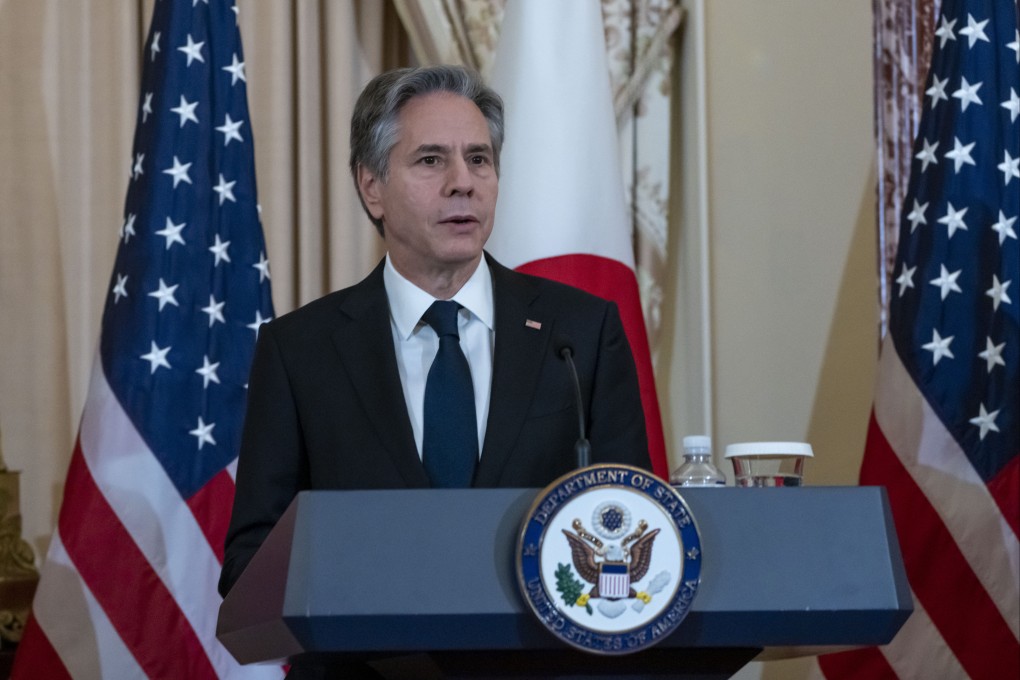Advertisement
US and Japan vow stronger security cooperation to counter China’s rapid economic and military growth
- Allies’ foreign ministers and defence chiefs meet in Washington ahead of Biden-Kishida summit as Tokyo embraces hawkish turn
- US and Japan working to deepen partnership across land, sea, air and space, both cyber and outer, Antony Blinken says
Reading Time:5 minutes
Why you can trust SCMP
22

Mark Magnierin New York
Senior US and Japanese diplomats and defence officials on Wednesday pledged to strengthen security ties, extend their cooperation into space and better integrate weapons systems and military personnel as tensions mount in East Asia and Japan becomes more forceful in countering China’s growing economic and military footprint.
The US-Japan Security Consultative Committee meeting came as Japan embarks on a historic strengthening of its defence stance ahead of a summit on Friday between President Joe Biden and Prime Minister Fumio Kishida. The Japanese leader was in London on Wednesday, signing a major bilateral defence pact with Britain to enable easier joint military exercises, before flying to Washington.
“We’re working to deepen our cooperation across every realm, land, sea, air and, yes, in space, cyber and outer,” said Secretary of State Antony Blinken. “We agreed, as you’ve heard, that attacks to, from or within space, present a clear challenge.”
Advertisement
Wednesday’s “2+2” consultations involving Blinken, Defence Secretary Lloyd Austin, Foreign Minister Yoshimasa Hayashi and Defence Minister Yasukazu Hamada followed an eventful few weeks in which Tokyo revised its national security blueprints.
The overhaul entailed rewriting Japan’s defence profile and crafting more aggressive strategies to push back against threats posed by China, as well as by North Korea and Russia. Washington has long supported the more hawkish approach.
Japan’s vital communications satellites are unprotected, and the US agreed to extend into space the scope of Article V of the US-Japan Security Treaty, which calls on each side to come to the other’s defence. China’s anti-satellite abilities have developed rapidly.
Advertisement
Advertisement
Select Voice
Choose your listening speed
Get through articles 2x faster
1.25x
250 WPM
Slow
Average
Fast
1.25x